Exclusive Neuroject Article: Industrial activity is undergoing a significant transition thanks to new technologies. In the future, we will be able to operate robots and autonomous cars from the comfort of our homes and perform tasks that presently demand our physical presence remotely. The physical and virtual work environments are combined in the industrial metaverse, allowing for seamless cooperation and communication between humans, robots, and AI. As a result, industrial activity is more appealing, productivity rises, and economic, social, and environmental sustainability is enhanced.
Businesses are aware of the benefits of Industry 4 in construction, including faster, smarter, and more sustainable productivity. Making good on that commitment is the challenging part. Think value, not tech; think people, not tools; and set clear aims from the beginning are the three main drivers for Industry 4 in construction success, according to management expert and “father of Industry 4.0” Henrik von Scheel.
Table of Contents
An Introduction to Industry 4 in Construction
The Fourth Industrial Revolution, also known as Industry 4.0 (or Industrie 4.0 as in German), was born in 2011 from a project under the German government’s high-tech policy. Cyber-Physical Production Systems (CPPS) were developed from Cyber-Physical Systems (CPS). One of the major linked initiatives of Industry 4 in construction is SmartFactory.
The phrase Industry 4.0 was first used by the public in 2011 at the Hannover Fair. The switch from manual to steam- or water-powered industrial equipment characterized the First Industrial Revolution. The Second Industrial Revolution was made possible by electricity, which transformed factories into cutting-edge production lines, resulting in great productivity and substantial economic expansion.
With the advent of communication technologies and field-level computers like Programmable Logic Controllers (PLC) during the Third Industrial Revolution, production became increasingly automated. Production systems, such as CPPS, are able to make intelligent decisions in Industry 4 in construction era through real-time communication and collaboration across “manufacturing things,” enabling flexible production of high-quality customized products at scale.
The joint Industrie 4.0 Platform has been developed by the professional associations BITKOM, VDMA, and ZVEI in order to advance the project and guarantee a coordinated, cross-sectoral approach. The Industrial Internet Consortium (USA), Industria 4.0 (Italy), Produktion 2030 (Sweden), Made in China 2025, and Society 5.0 (Japan), to mention a few, are only a few examples of similar strategic initiatives that have been launched in many nations around the world.
The term “Industrie 4.0” refers to a vision that started as a project to increase the competitiveness of the German manufacturing sector. It is frequently used synonymously with the idea of the fourth industrial revolution. It is distinguished by, among other things.
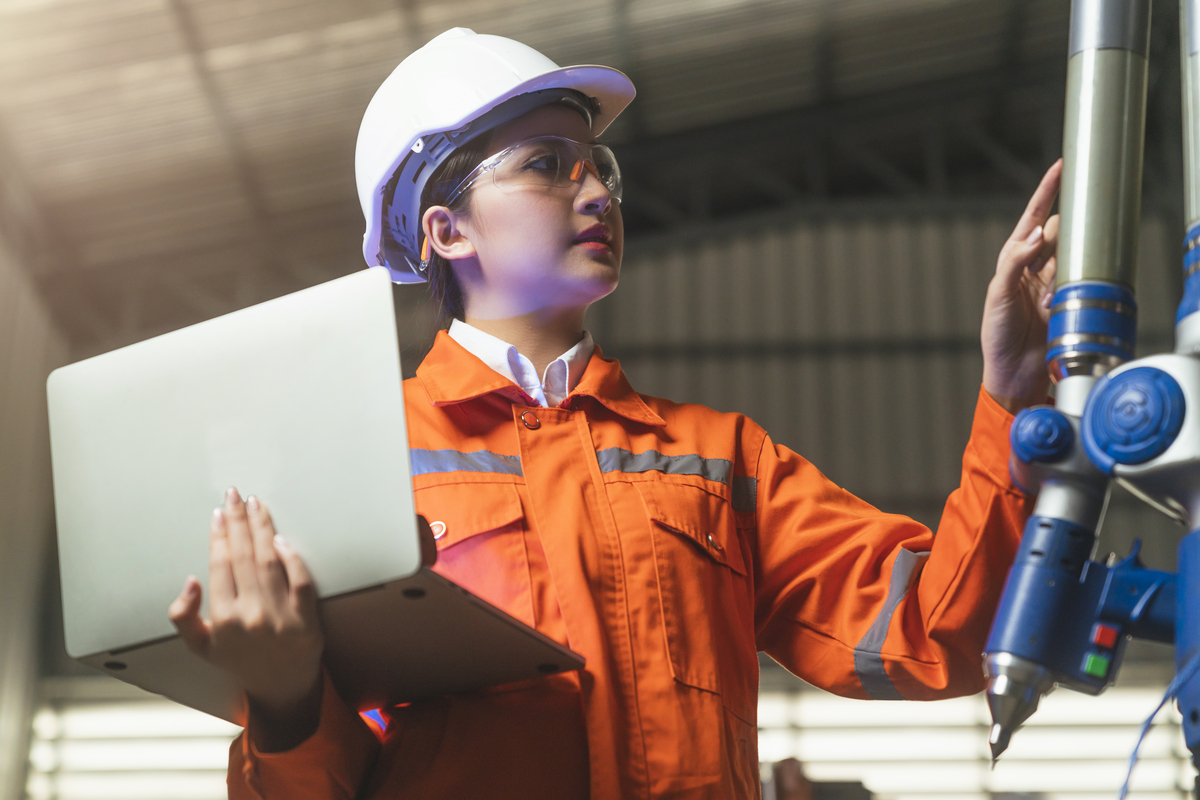
Understanding Industry 4 in Construction:
The Fourth Industrial Revolution, often known as Industry 4 in construction, is the incorporation of digital technologies into the production process, allowing for the development of smart factories and a highly networked ecosystem. The usage of cutting-edge technology, including the Internet of Things (IoT), artificial intelligence, robotics, big data analytics, and cyber-physical systems, is encompassed by its key concepts. The goal of this integration is to increase industrial operations’ automation, efficiency, and flexibility.
Industry 4 in construction expands the scope of these inventions’ potential; Cloud computing, the Internet, blockchain, and sensors all provide connectivity, data, and processing capacity.
Intelligence and Analytics: artificial intelligence, machine learning, and advanced analytics
Robotics and Automation: autonomous guided vehicles, virtual reality (VR) and augmented reality (AR), and human-machine interface
Advanced Engineering: It includes nanotechnology, renewable energy, and additive manufacturing (3-D printing).
However, technology is simply one component of Industry 4 in construction. Companies must guarantee that their employees are adequately trained by upskilling and reskilling them, and then acquire new personnel as needed if they want to succeed in the Fourth Industrial Revolution.
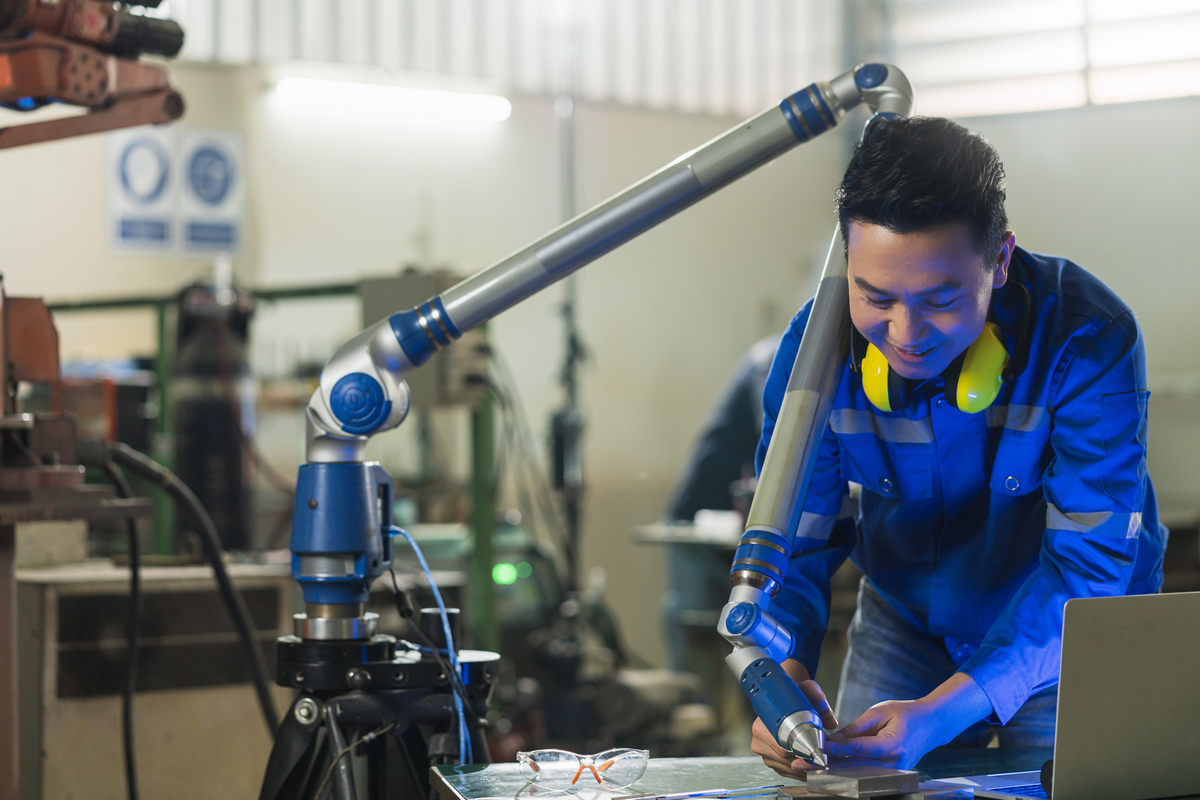
The Impact of Industry 4 in Construction:
It is feasible to provide individualized, intelligent and linked building products in the Construction 4.0 age. With digitalized design, building, and operation, the industry is being transformed in this way. Clearly, the construction industry undergoes a paradigm shift as a result of this digital transition. This paradigm shift, which has been extensively studied in the scientific literature in relation to the diffusion of BIM, has to occur on a variety of dimensions, including those of technology, organization, policies, etc.
It also requires extensive integration of people, knowledge, processes, and information. In an Industry 4 in construction setting, attention should generally be given to three different integrations: end-to-end, vertical, and horizontal integrations. In order to create an open collaboration between the concerned stakeholders and to deliver goods and services in real-time, horizontal integration refers to the integration between resources and the associated network of information within the value chain.
Vertical integration is used to describe individualized manufacturing as an alternative to the conventional linear production processes, such as mass production, in the future’s smart factories.
Below are the top digital transformation technologies brought about by Industry 4 in construction:
- Big Data and Analytics
- Autonomous Robots
- Simulation / Digital Twins
- Horizontal and Vertical System Integration
- Industrial IoT (IIot)
- Cybersecurity Technology
- The Cloud
- Additive Manufacturing
- Artificial Intelligence and Machine Learning
- Augmented Reality

Key Applications of Industry 4 in Construction:
What is a fundamental enabler of smart logistics and similar systems? The (Industrial) Internet of Things does indeed go beyond the basic features of sensors, actuators, communication tools, and data gathering/analytics. This is a perfect analogy to the Internet of Everything, which sees connected things like people, processes, and data as the foundation for smart applications.
Modeling of building information (BIM)
Efficiency: Better coordination and stakeholder participation made possible by BIM reduces construction-related errors and rework. It allows for better activity planning and sequencing, maximizing resource use and reducing delays at Industry 4 in construction.
Sustainability: Using BIM makes it simpler to integrate sustainable practices into the planning and construction processes. It allows for the analysis of energy use, the modeling of environmental performance, and the discovery of energy-saving and environmentally friendly solutions.
Quality: By spotting conflicts and clashes throughout the design process, BIM helps to eliminate on-site adjustments and ensure accurate construction. Throughout the life of the building, it provides a comprehensive digital model that may be utilized for quality control and facilities management.
Suggested article for reading: What is BIM and Importance of BIM in Construction?
Internet of Things (IoT):
Efficiency: IoT devices may track the functioning of construction-related equipment and collect data in real time. Predictive maintenance, equipment utilization optimization, and downtime reduction are all possible uses for this data. Additionally, it allows for remote control and monitoring, which speeds up on-site problem-solving at Industry 4 in construction.
Sustainability: IoT sensors can monitor environmental conditions, resource use, and energy use, enabling more effective energy management. Decisions about sustainable practices and energy-saving initiatives can be informed by this data.
Quality: IoT devices may continuously monitor building operations, identifying deviations, and sending out alerts for corrective steps. This promotes consistency with specifications, lowers faults, and upholds quality standards.
Suggested article for reading: What is IoT in Construction? Definition, Applications and Steps (2024)
Robotics and Automation:
Efficiency: Robotic systems are capable of carrying out labor-intensive repetitive activities faster and more precisely than humans, which boosts output and speeds up project completion. Automation improves resource usage, lowers errors, and streamlines operations at Industry 4 in construction.
Sustainability: By ensuring exact execution and minimizing material waste, robotics, and automation minimize waste and rework. By carrying out risky duties and lowering accidents on building sites, they can also contribute to increased safety.
Quality: Since robots can carry out activities with extreme accuracy, both quality and consistency have improved. Automation lowers human error, which results in fewer flaws and greater building standards.
Suggested article for reading: Construction Robots in 2024
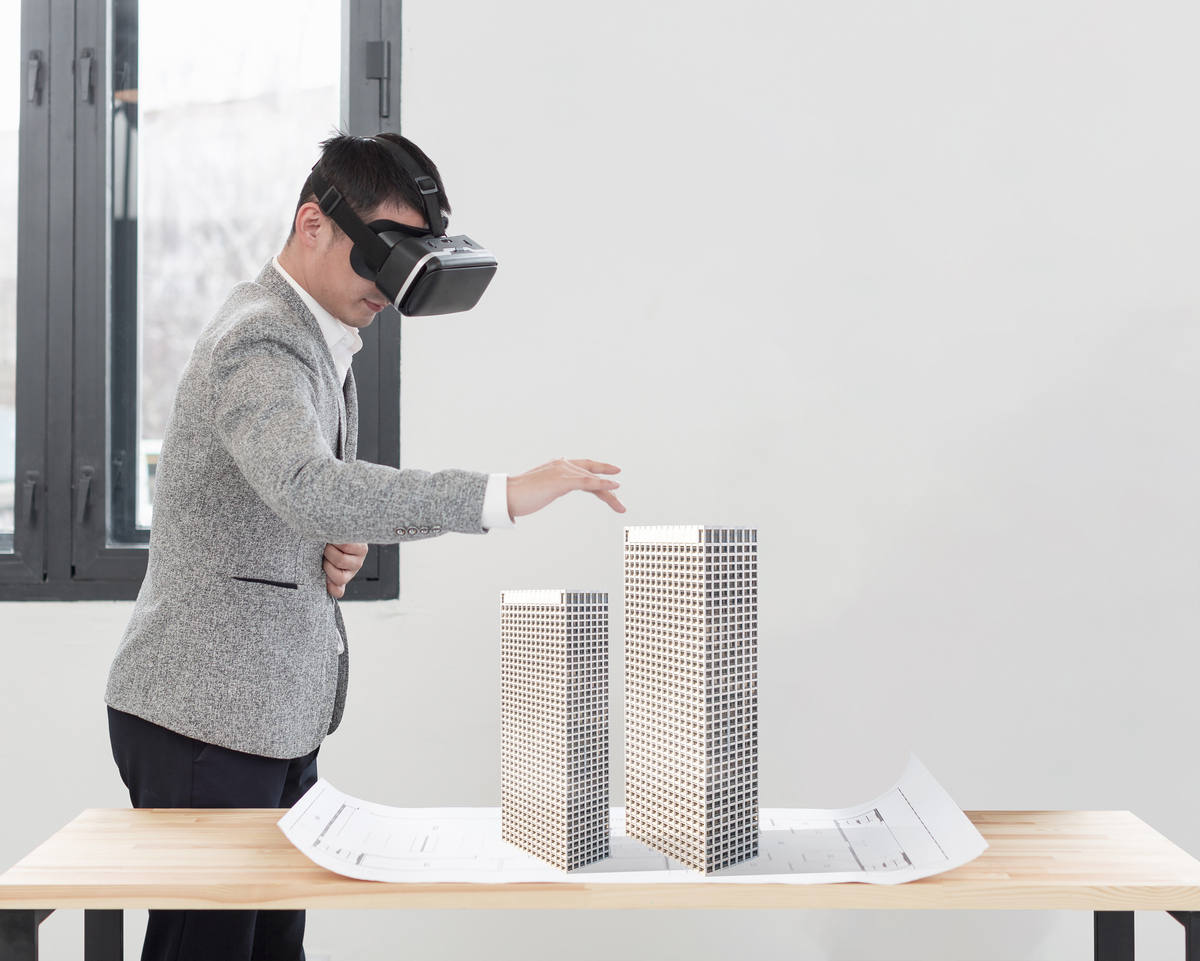
Augmented Reality (AR) and Virtual Reality (VR):
Efficiency: Virtual walkthroughs, collision detection, and visualization of design models are made possible by AR and VR technology, enabling the early discovery and resolution of problems. This cuts down on rework, enhances coordination, and speeds up decision-making, which saves time and increases efficiency at Industry 4 in construction.
Sustainability: By simulating energy and environmental issues, AR and VR can aid in the design and assessment of sustainable architecture. They promote sustainable construction methods by enabling stakeholders to evaluate how design choices affect energy usage, daylighting, and thermal comfort.
Quality: Immersive training and simulation environments made possible by AR and VR improve worker skills and raise construction quality. As a result, there are fewer mistakes and misunderstandings during construction since they aid in precisely picturing and articulating design intent.
Suggested articles for reading:
Explore the Impact of Augmented Reality in Construction (2024)
The 7 Benefits of Virtual Reality in Construction
Advanced Materials and 3D Printing:
Efficiency: Modern materials, such as high-performance composites, can facilitate quicker construction while using less material and enhancing structural efficiency. The quick manufacturing of intricate structures using 3D printing technology results in lower labor and material costs at Industry 4 in construction.
Sustainability: Modern materials frequently perform better in terms of the environment, including in terms of durability, recyclability, and embodied carbon. By reducing waste production and maximizing resource use, 3D printing may support environmentally friendly building techniques.
Quality: High-quality construction is possible because of the improved strength, durability, and performance qualities of modern materials. Building components are accurate and precise thanks to 3D printing, which also improves quality assurance.
Suggested article for reading: 3D Printing in Construction
Predictive Analytics and Artificial Intelligence (AI):
Efficiency: AI algorithms can use historical project data to examine resource allocation, material procurement, and building timetables. By identifying potential hazards and bottlenecks, predictive analytics enables preemptive interventions to keep projects on schedule at Industry 4 in construction.
Sustainability: AI and predictive analytics are able to identify patterns in energy use, optimize energy use, and recommend energy-efficient tactics. They can also spot chances for recycling and trash reduction, advancing environmental objectives.
Quality: AI systems may examine construction data to find patterns and correlations, improving quality control and allowing for the early identification of potential quality problems. Additionally, they can help with automated inspections of building materials to make sure they adhere to quality requirements.
Suggested article for reading: Artificial Intelligence or AI in Construction
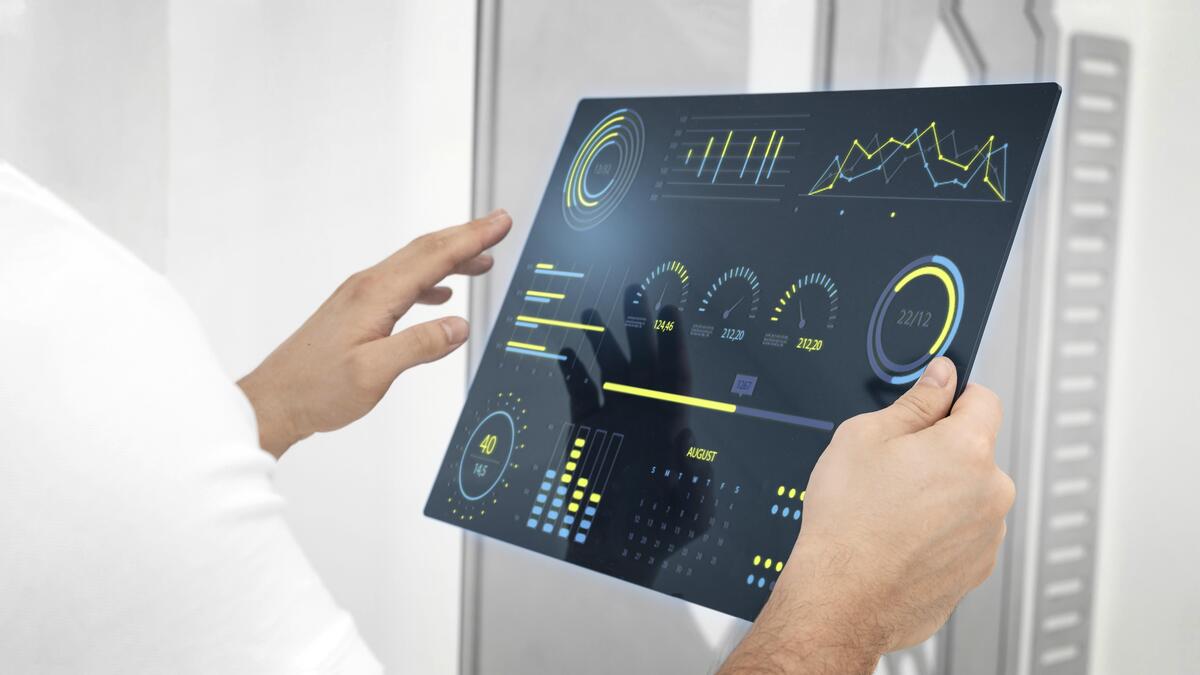
Overcoming Challenges and Adoption:
And in Industry 4 in construction, the same enduring obstacles can be found right here as well. Among others, The Boston Consulting Group identified:
- Defining a strategy (for Industry 4 in construction).
- Redesigning the structure and procedures to maximize results.
- Having knowledge of the business case conducting effective tests.
- Making the company understand that action is required.
- Change management is so frequently ignored.
- Corporate culture is a genuine departmental connection.
While some businesses have more or less consistent, all-encompassing strategies for Industry 4 in construction, the majority do not. One of the biggest problems, as it is in so many commercial fields, is a lack of plan.
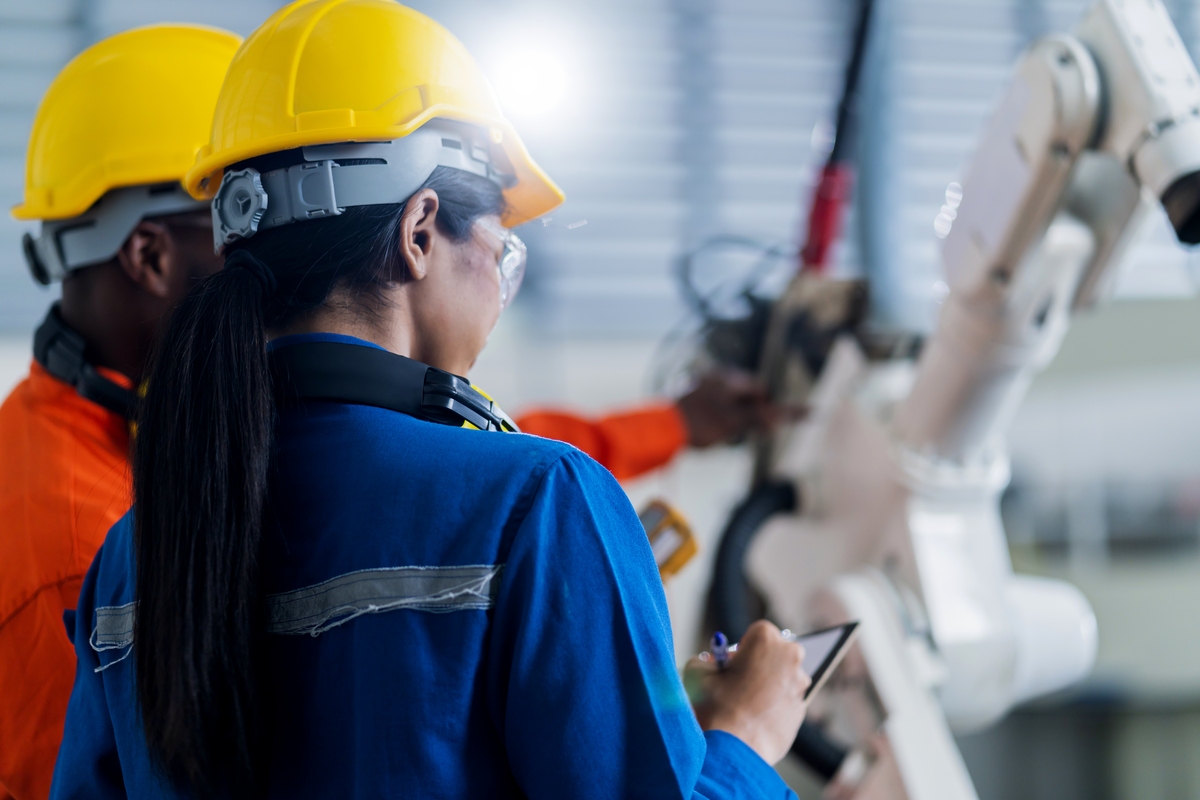
Future Trends and Conclusion:
Industry 4 in construction, the fourth wave of technical development, and the digital transformation that is driving it are forcing businesses everywhere to adopt newer technology in order to stay competitive. The digital revolution is not an exception to the construction business, despite the fact that it is not driving this development.
Construction industry trends and Industry 4 in construction potential point to a fundamental change in how construction is done in the future. Here are some significant developments and prospects:
- Artificial intelligence (AI) integration
- Advanced Robotics
- Digital Twin Technology
- Advancements in 3D printing
- Augmented Reality and Virtual Reality
Construction processes could be revolutionized by Industry 4 in construction if it increases productivity, boosts sustainability, and elevates quality. The following advantages can be attained by the construction business by incorporating cutting-edge technology and automation:
- Increased output and reduced costs due to better use of resources and processes.
- Increased safety by using robots and autonomous systems for dangerous tasks.
- Reduced errors and rework due to improved stakeholder participation and communication.
- Better project scheduling and planning thanks to predictive analytics and real-time data analysis.
- Sustainable building methods, such as eco-friendly materials, trash reduction, and energy-efficient designs.
In conclusion, the adoption of Industry 4 in construction technology in the construction industry has enormous potential to transform established procedures. These innovations—from artificial intelligence and robots to digital twins and 3D printing—improve the effectiveness, sustainability, and quality of construction processes. Construction organizations must adopt Industry 4 in construction if they want to stay competitive in a market that is changing quickly, foster innovation, and influence construction’s future.
Suggested article for reading:
The Top 7 Green Architecture Projects
important construction technology in 2024
7 Important Building Technology Ideas for 2024
Resources:
VTT Research | McKinsey and Company | Building Transformation | Machine Metrics | iscoop |
Journal articles:
- Xun Xu, Yuqian Lu, Birgit Vogel-Heuser, Lihui Wang, Industry 4.0 and Industry 5.0—Inception, conception, and perception, Journal of Manufacturing Systems, Volume 61, 2021, Pages 530-535, ISSN 0278-6125, https://doi.org/10.1016/j.jmsy.2021.10.006.
(https://www.sciencedirect.com/science/article/pii/S0278612521002119) - Vogel-Heuser B, Hess D. Guest editorial: Industry 4.0–prerequisites and visions. IEEE Trans Autom Sci Eng 2016;13(April 2).
- Bauernhans T, Vogel-Heuser B, ten Hompel M. In: Allgemeine Grundlagen, editor. Handbuch Industrie 4.0 Bd.4. Springer; 2017. ISBN: 978-3-662-53254-53256.
- Vogel-Heuser B, Bayrak G, Frank U. Forschungsfragen in “Produktionsautomatisierung der Zukunft”. Diskussionspapier für die acatech
Projektgruppe “ProCPS – Production CPS”. acatech Materialien. 2012. - Zuehlke D. SmartFactory—towards a factory-of-things. Annu Rev Control 2010;34 (April 1):129–38. https://doi.org/10.1016/j.arcontrol.2010.02.008.
- Lu Y, Xu X, Wang L. Smart manufacturing process and system automation – a critical review of the standards and envisioned scenarios. J Manuf Syst 2020;56: 312–25. https://doi.org/10.1016/j.jmsy.2020.06.010.
- Wang S, Wan J, Zhang D, Li D, Zhang C. Towards smart factory for Industry 4.0: a self-organized multi-agent system with big data based feedback and coordination. Comput Netw 2016;101:158–68.
- Zhong RY, Xu X, Klotz E, Newman ST. Intelligent manufacturing in the Context of Industry 4.0: a review. Engineering 2017;3(5):616–30.
- El Jazzar Mahmoud, Schranz Christian, Urban Harald, Nassereddine Hala. Integrating Construction 4.0 Technologies: A Four-Layer Implementation Plan, Frontiers in Built Environment. Volume 7, 2021. DOI=10.3389/fbuil.2021.671408
- Yang, H., et al. (2021). Emerging applications and technologies of artificial intelligence in construction: A review. Automation in Construction, 125, 103693.
- Khoshnoudian, F., et al. (2021). Robotic applications in construction industry: State-of-the-art and future challenges. Automation in Construction, 129, 103920.
- Tomaszewska, A., et al. (2021). Building information modeling in the context of industry 4.0: A systematic review. Automation in Construction, 123, 103549.
- Ma, Z., et al. (2021). 3D printing technologies and applications in construction: A review. Automation in Construction, 122, 103473.
- Wu, P., et al. (2021). A review of augmented reality and virtual reality in construction: Opportunities and challenges. Automation in Construction, 123, 103605.
- Pishdad-Bozorgi, P., et al. (2021). Digital twin technology in construction: A comprehensive review. Automation in Construction, 126, 103761.
- Bentley Systems. (n.d.). BIM for construction. Retrieved from https://www.bentley.com/en/solutions/project-delivery/bim-for-construction
- Akadiri, P. O., et al. (2018). Building information modelling (BIM) for sustainable building design: A review. Sustainable Cities and Society, 38, 251-258.
- Azhar, S., et al. (2011). Building Information Modeling (BIM): A new paradigm for visual interactive modeling and simulation for construction projects. Proceedings of the 2011 Construction Research Congress, 541-550.
- Chou, J. S., et al. (2019). A review of internet of things (IoT) applications in construction and built environment sectors. Automation in Construction, 99, 23-33.
- Soares, D., et al. (2019). IoT technologies and applications for smart buildings: A review. Automation in Construction, 106, 103-114.
- Gluch, P., et al. (2019). IoT applications in construction: An empirical analysis on construction workers’ acceptance. Automation in Construction, 98, 1-14.
- Tzortzopoulos, P., et al. (2021). Robotics in construction: Towards industry 4.0 and the future of the industry. Automation in Construction, 125, 103716.
- Bargstädt, H. J., et al. (2019). Sustainable construction through industry 4.0: An analysis of state of the art, conceptualisations and future directions. Sustainability, 11(3), 678.
- Bock, T., et al. (2020). Automation of construction processes: A review of robotic technology for automated construction. Advanced Engineering Informatics, 45, 101111.
- Gül, L. F., et al. (2020). Augmented reality in construction projects: Current developments and future directions. Automation in Construction, 116, 103221.
- Barreca, F., et al. (2020). The potential of virtual reality for enhancing sustainability in the construction sector. Sustainability, 12(9), 3709.
- Geng, G., et al. (2021). Virtual and augmented reality in construction industry: A review. Automation in Construction, 127, 103697.
- D’Amico, B., et al. (2020). Advanced composite materials in construction: An overview. Procedia Structural Integrity, 25, 1724-1731.
For all the pictures: Freepik





